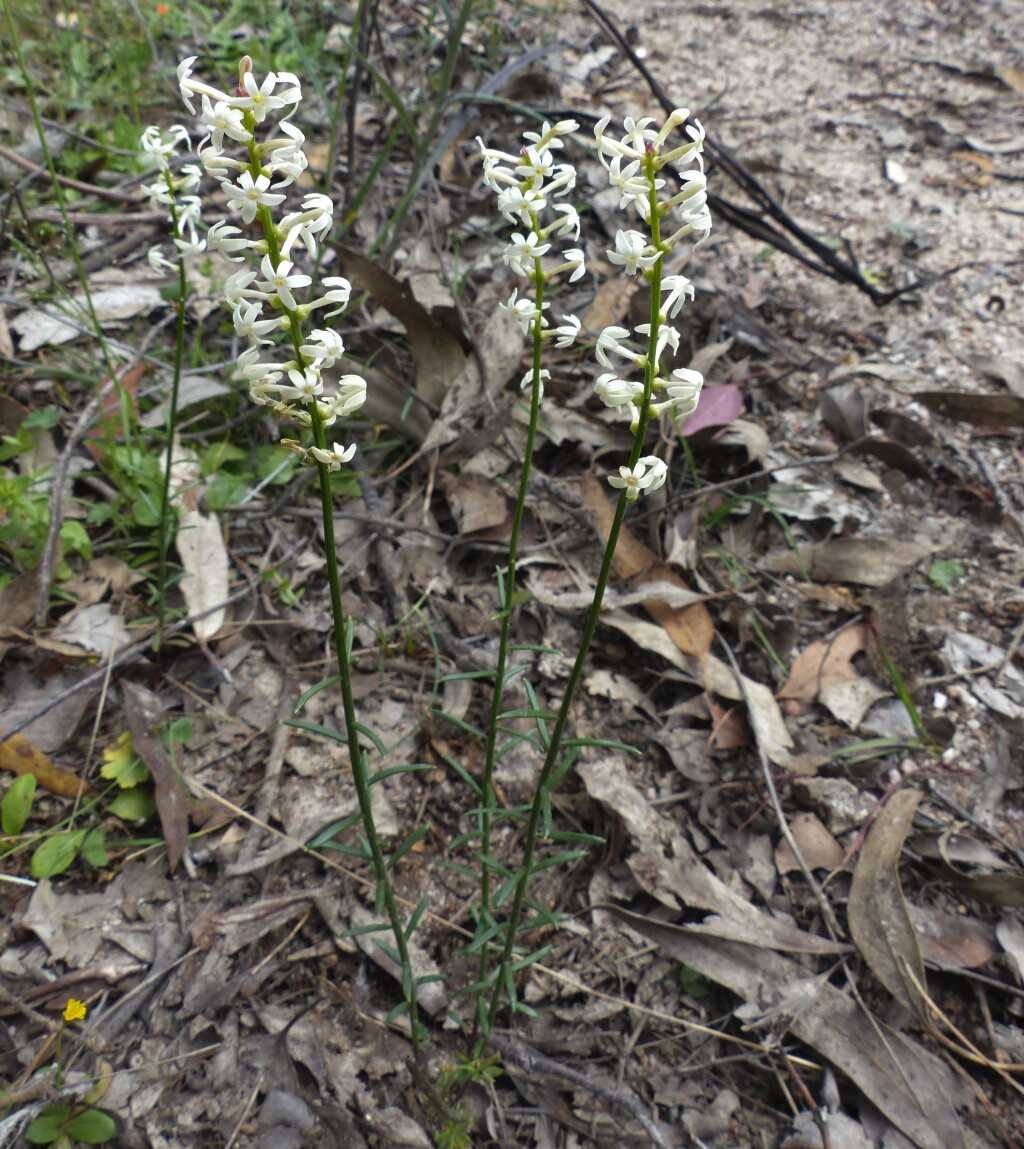Stackhousia monogyna
Labill. Creamy CandlesGlabrous (rarely hispid) perennial to 60 cm high, with 1–many, erect or ascending, often branched, stems arising from taproot. Leaves linear to narrowly obovate, 10–30(–50) mm long, 1–3(–8) mm wide, obtuse, acute or shortly mucronate at apex, not fleshy. Inflorescence a moderately dense to dense cylindric spike, sometimes branched; flowers solitary at nodes, each subtended by a bract and 2 bracteoles (bracteoles hyaline, often vestigial), bract usually arcuate, often curved downwards near base, but without a prominent saccate base, acute to acuminate, equal to nearly twice as long as calyx. Hypanthium 0.5–1 mm long; sepals 1–1.5 mm long; corolla cream or white, tube 4–7 mm long, lobes 2.5–4.5 mm long; gynoecium 3-partite. Mericarps usually 3, broad-obovoid to broad-ellipsoid, 2–2.5 mm long, acutely reticulate, the basal cavity shallow. Flowers Sep.–Feb.
LoM, MuM, Wim, GleP, Brid, VVP, VRiv, MuF, GipP, OtP, WaP, Gold, CVU, GGr, DunT, NIS, EGL, EGU, WPro, HSF, HNF, OtR, Strz, MonT, HFE, VAlp. Also SA, NSW, Tas. Widespread and common in open-forest, woodland and heathland from near sea-level to c. 1700 m on the Bogong High Plains.
Normally glabrous, but a specimen from Rotamah Island (Gippsland Lakes) at MEL is distinctive in having leaves and stems shortly hispid.
Barker, W.R. (1999). Stackhousiaceae. In: Walsh, N.G.; Entwisle, T.J., Flora of Victoria Vol. 4, Cornaceae to Asteraceae, pp. 49–54. Inkata Press, Melbourne.
 Spinning
Spinning



